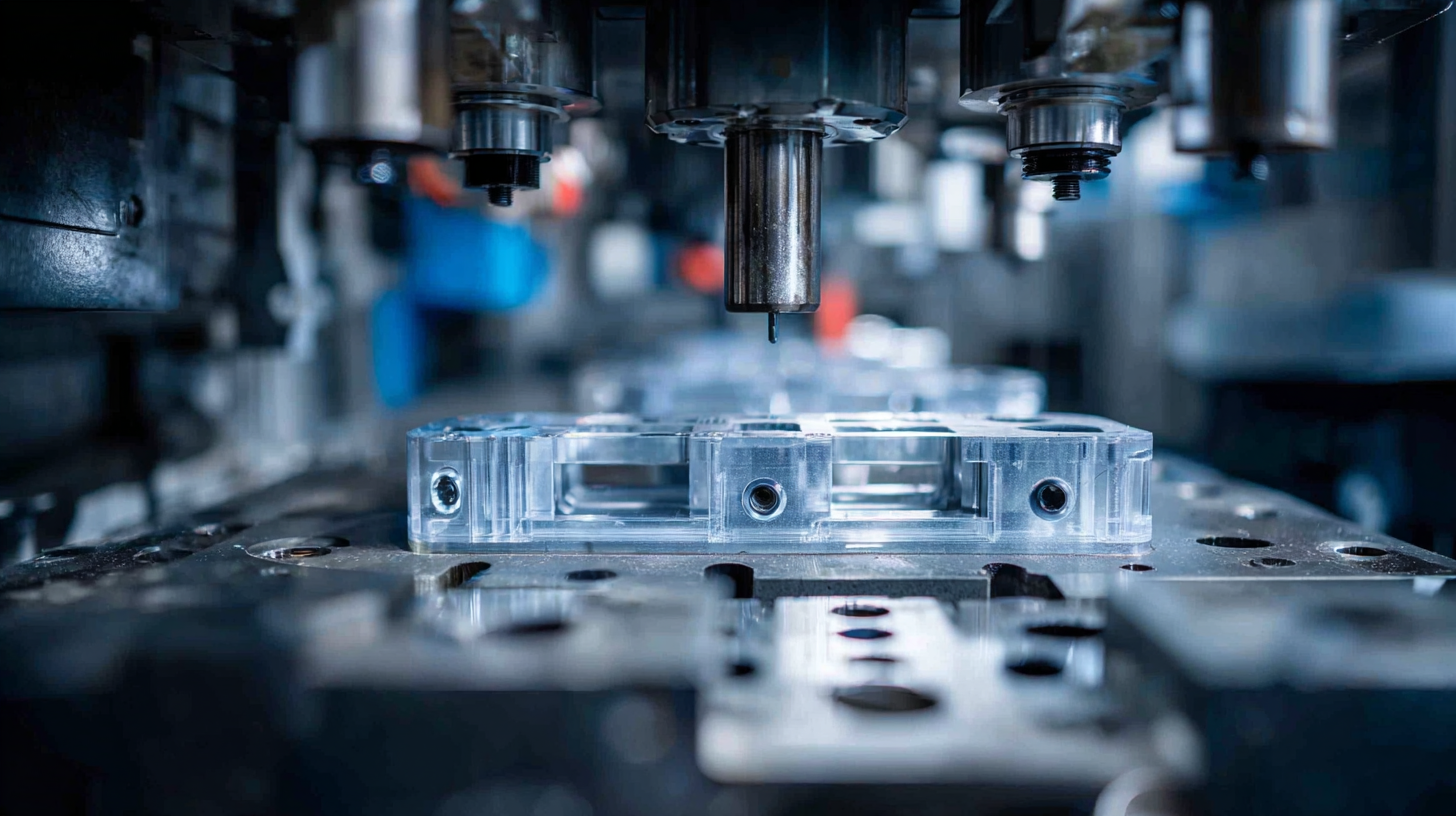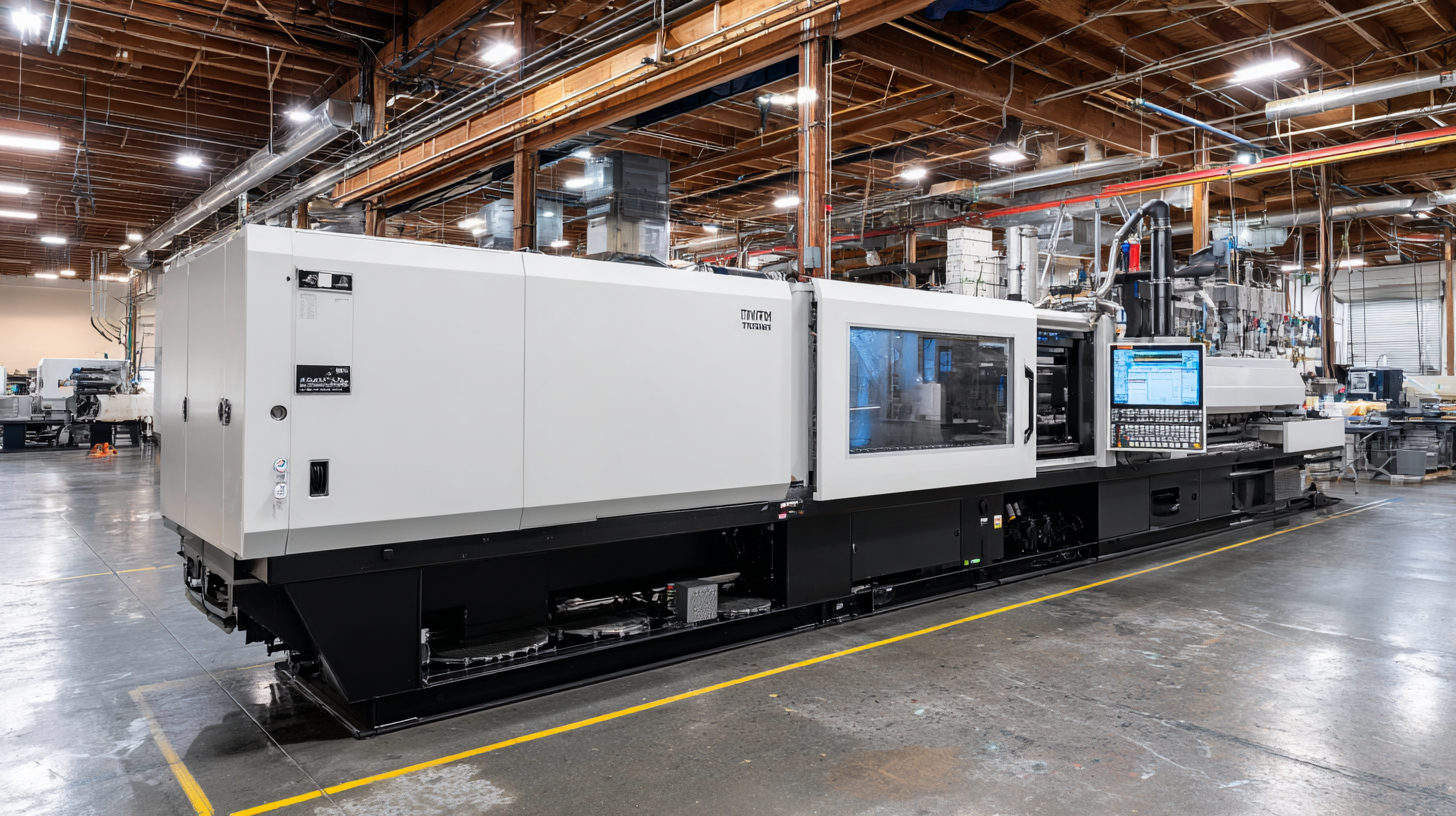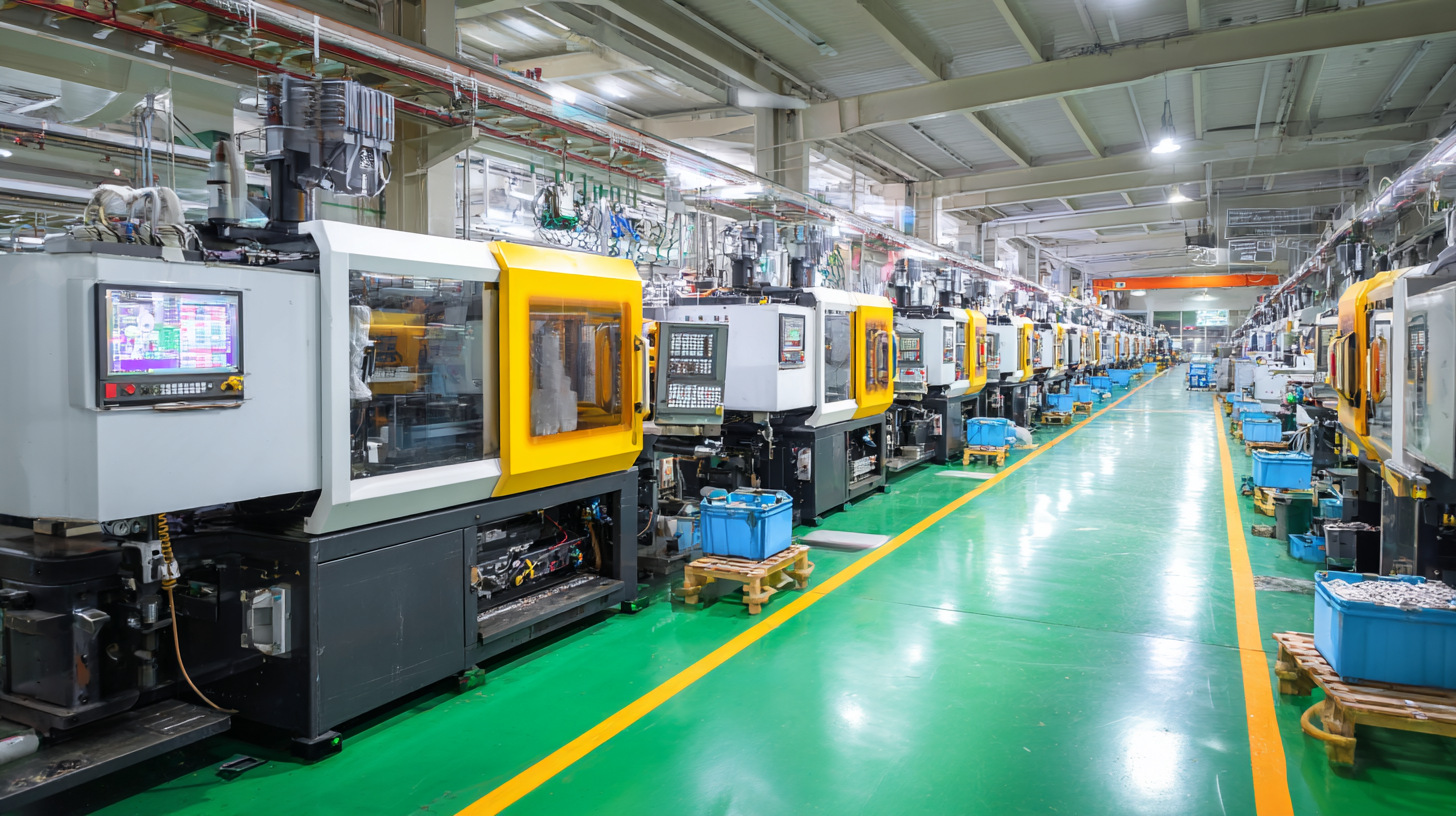What is Low Cost Injection Molding and How it Revolutionizes Manufacturing Efficiency
 In the realm of manufacturing, efficiency and cost-effectiveness are paramount, and "low cost injection molding" has emerged as a transformative solution. According to a recent industry report by Grand View Research, the global injection molding market is projected to reach $320 billion by 2025, driven by the demand for mass production and the need to minimize manufacturing costs. This innovative approach not only significantly reduces production expenses by up to 30%, but it also shortens lead times, allowing for rapid prototyping and bringing products to market faster.
In the realm of manufacturing, efficiency and cost-effectiveness are paramount, and "low cost injection molding" has emerged as a transformative solution. According to a recent industry report by Grand View Research, the global injection molding market is projected to reach $320 billion by 2025, driven by the demand for mass production and the need to minimize manufacturing costs. This innovative approach not only significantly reduces production expenses by up to 30%, but it also shortens lead times, allowing for rapid prototyping and bringing products to market faster.
Additionally, the adoption of advanced materials and automation technologies has further enhanced the capabilities of low cost injection molding, making it a key player in reshaping manufacturing efficiency across various sectors. The convergence of affordability and performance positions this method as a vital tool for businesses looking to stay competitive in an increasingly cost-sensitive market.
Understanding Low Cost Injection Molding: A Game Changer in Manufacturing
 Low cost injection molding has emerged as a transformative approach within the manufacturing sector, redefining efficiency and cost-effectiveness. This innovative technique allows businesses to produce high-quality plastic parts at significantly reduced costs, making it particularly appealing for smaller production runs and startups. According to a recent report by MarketsandMarkets, the global injection molding market is projected to reach $376.60 billion by 2027, with low-cost strategies playing a vital role in this growth. These methods enable manufacturers to optimize production cycles and minimize waste, ultimately leading to a more sustainable manufacturing process.
Low cost injection molding has emerged as a transformative approach within the manufacturing sector, redefining efficiency and cost-effectiveness. This innovative technique allows businesses to produce high-quality plastic parts at significantly reduced costs, making it particularly appealing for smaller production runs and startups. According to a recent report by MarketsandMarkets, the global injection molding market is projected to reach $376.60 billion by 2027, with low-cost strategies playing a vital role in this growth. These methods enable manufacturers to optimize production cycles and minimize waste, ultimately leading to a more sustainable manufacturing process.
The ability to produce injection-molded parts quickly and affordably democratizes access to advanced manufacturing technologies. A study from Deloitte highlights that companies implementing low-cost injection molding can reduce production costs by up to 40%, enhancing their competitiveness in various industries including automotive, consumer goods, and medical devices. By investing in modern machinery and optimizing design processes, manufacturers can leverage economies of scale even at lower volumes. This revolution in approach allows firms to respond more agilely to market demands while maintaining high standards of quality, ultimately positioning low-cost injection molding as a game changer in the manufacturing landscape.
Key Benefits of Low Cost Injection Molding for Small and Medium Enterprises
Low cost injection molding has emerged as a game changer for small and medium enterprises (SMEs) by significantly enhancing manufacturing efficiency without compromising on quality. This method allows businesses to produce high volumes of intricate parts at a fraction of traditional manufacturing costs. By utilizing affordable molds and streamlined processes, SMEs can reduce their initial investment and speed up production. This flexibility empowers them to respond quickly to market demands and innovate rapidly, which is essential in today's competitive landscape.
One of the key benefits of low cost injection molding is its ability to cater to various industries, including automotive and electronics. As the metal injection molding (MIM) market continues to grow, driven by sectors requiring complex and durable components, SMEs can leverage this technology to manufacture lightweight yet strong parts. This adaptation not only lowers production costs but also enables enterprises to focus on developing unique products tailored to specific market needs, facilitating growth and sustainability in a challenging environment.
Efficiency of Low Cost Injection Molding Compared to Traditional Methods
Innovative Technologies Driving Low Cost Injection Molding Forward
The injection molding industry is undergoing a significant transformation driven by innovative technologies that enhance manufacturing efficiency and reduce costs. The market is poised for substantial growth, expected to attain a value of USD 365.22 billion in 2024 and reaching USD 580.44 billion by 2033, demonstrating a robust CAGR of 4.74%. This growth is fueled by advancements in processes such as micro-injection mold and multi-component molding, which not only improve production capabilities but also expand the range of applications.
Innovative solutions, such as digital DFM tools, have emerged to give manufacturers greater visibility into the injection molding process, drastically minimizing production delays and costs. Recent developments, including low-pressure injection molding systems, are set to revolutionize the way materials are processed. For instance, the use of liquefied CO2 for rapid mold cooling has been shown to significantly reduce cycle times, aligning with the industry's push for efficiency and sustainability. Together, these advancements represent a promising shift towards a more cost-effective and innovative injection molding landscape.
Tips for Selecting the Right Low Cost Injection Molding Partner
When it comes to low-cost injection molding, selecting the right partner is crucial for maximizing manufacturing efficiency. According to a report by Allied Market Research, the global injection molding market is projected to reach $379.4 billion by 2027, driven by the increasing demand for affordable and high-quality manufacturing solutions. A competent partner can help navigate the complexities of the process, ensuring that companies benefit from reduced production costs while maintaining product quality.
When evaluating potential partners, it's essential to consider their technical expertise, equipment capabilities, and experience in your specific industry. The plastic injection molding process can vary significantly depending on the materials and designs involved, so partners who specialize in your sector may bring added value. Moreover, a survey by Plastics Technology highlighted that 70% of manufacturers find that working with a strategically aligned injection molding partner enhances their overall production efficiency, allowing them to innovate and respond quicker to market demands. By carefully assessing these factors, companies can ensure they choose a partner that will contribute positively to their low-cost injection molding projects.
What is Low Cost Injection Molding and How it Revolutionizes Manufacturing Efficiency
| Parameter | Description | Importance |
|---|---|---|
| Material Selection | Choosing the right plastic resin that balances cost and performance. | Crucial for ensuring product durability and cost-effectiveness. |
| Mold Design | Designing molds that are simple, yet efficient, to reduce production time. | Affects the speed of production and overall costs. |
| Production Volume | Determining the right production runs for cost efficiency. | Ensures economies of scale and lower per-unit costs. |
| Lead Time | Time taken from concept to final product delivery. | Important for market responsiveness and competitiveness. |
| Partner Experience | Experience of the injection molding partner in relevant industries. | Influences quality and reliability of the manufacturing process. |
Case Studies: Successful Implementation of Low Cost Injection Molding Solutions
 Low-cost injection molding has emerged as a game-changer in the manufacturing industry, allowing companies to produce high-quality plastic components at an affordable price. Case studies have shown that businesses across various sectors, from consumer goods to automotive, are successfully implementing these solutions to streamline production processes and reduce overhead costs. For instance, a small startup was able to accelerate its product development cycle by utilizing low-cost injection molding, which not only improved efficiency but also enabled rapid prototyping and testing of new designs.
Low-cost injection molding has emerged as a game-changer in the manufacturing industry, allowing companies to produce high-quality plastic components at an affordable price. Case studies have shown that businesses across various sectors, from consumer goods to automotive, are successfully implementing these solutions to streamline production processes and reduce overhead costs. For instance, a small startup was able to accelerate its product development cycle by utilizing low-cost injection molding, which not only improved efficiency but also enabled rapid prototyping and testing of new designs.
Tips for successful implementation of low-cost injection molding include carefully selecting the right material and technology that suits your specific needs. It's crucial to analyze the material properties, such as strength and flexibility, to ensure compatibility with your product requirements. Additionally, investing in high-quality molds can lead to longer production runs and minimized repair costs, enhancing overall profitability. Collaborating with experienced partners who specialize in low-cost solutions can also provide valuable insights and help navigate potential challenges during implementation.
Another key takeaway from successful case studies is the importance of optimizing the design for manufacturability. Simplifying complex geometries and minimizing the number of components can significantly reduce production costs. Engaging in thorough design reviews and simulations before committing to molds can save time and resources, leading to successful outcomes in low-cost injection molding projects.
Related Posts
-

Innovative Injection Moulding Process Examples That Drive Global Procurement Efficiency
-

Injection Moulding Process Challenges That Every Global Buyer Should Know
-

How to Choose the Right Plastic Coating for Your Manufacturing Needs
-

Unlocking the Advantages of Polyvinyl Chloride for Global Supply Chain Efficiency
-

Understanding Injection Molding Tooling Processes and Their Industry Impact
-

Unveiling the Advantages of Polypropylene Plastic: A Game Changer for Modern Manufacturing
